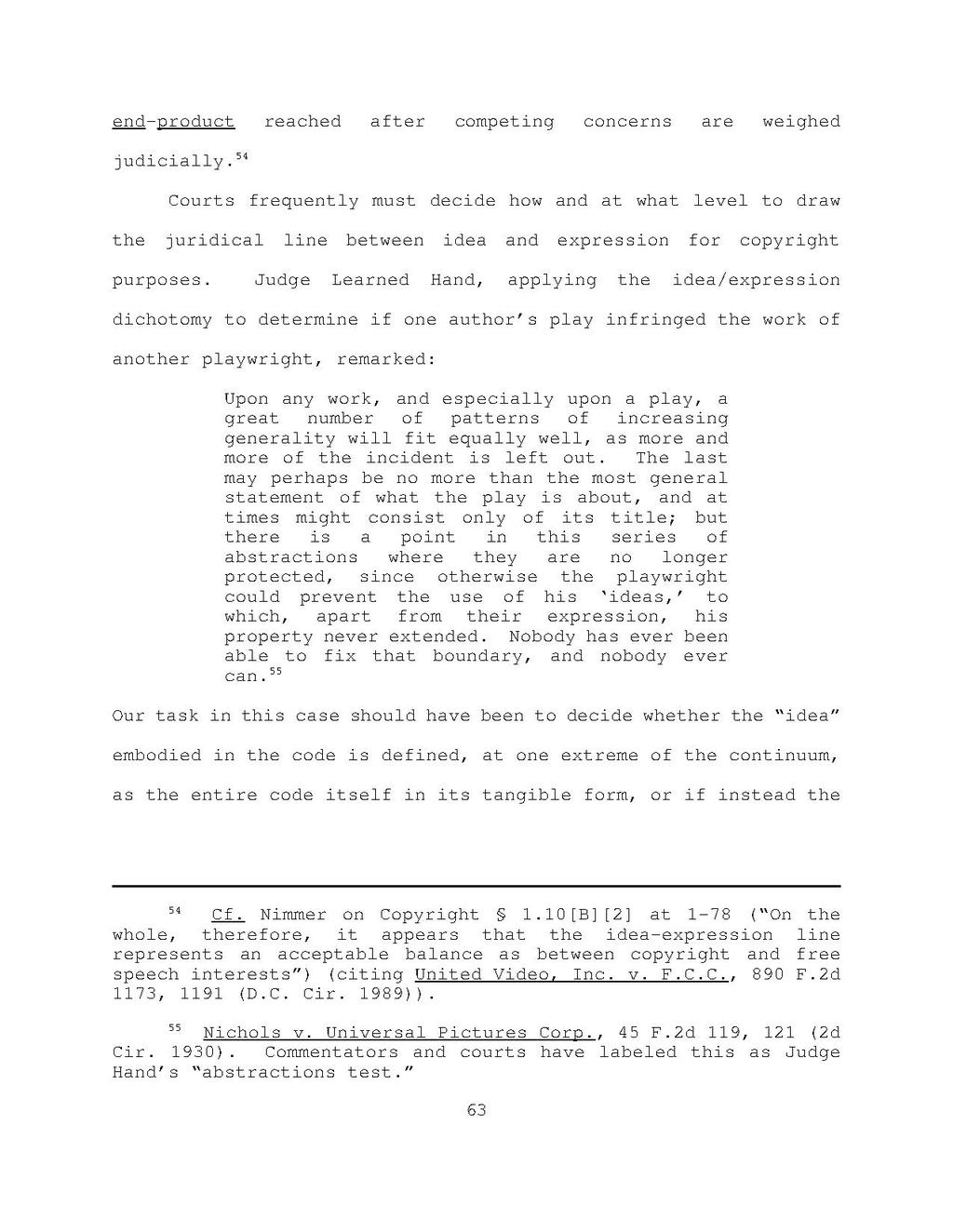end-product reached after competing concerns are weighed judicially.[1]
Courts frequently must decide how and at what level to draw the juridical line between idea and expression for copyright purposes. Judge Learned Hand, applying the idea/expression dichotomy to determine if one author's play infringed the work of another playwright, remarked:
Upon any work, and especially upon a play, a great number of patterns of increasing generality will fit equally well, as more and more of the incident is left out. The last may perhaps be no more than the most general statement of what the play is about, and at times might consist only of its title; but there is a point in this series of abstractions where they are no longer protected, since otherwise the playwright could prevent the use of his 'ideas,' to which, apart from their expression, his property never extended. Nobody has ever been able to fix that boundary, and nobody ever can."[2]
Our task in this case should have been to decide whether the "idea" embodied in the code is defined, at one extreme of the continuum, as the entire code itself in its tangible form, or if instead the
- ↑ Cf. Nimmer on Copyright § 1.10[B][2] at 1-78 ("On the whole, therefore, it appears that the idea-expression line represents an acceptable balance as between copyright and free speech interests") (citing United Video, Inc. v. F.C.C., 890 F.2d 1173, 1191 (D.C. Cir. 1989)).
- ↑ Nichols v. Universal Pictures Corp., 45 F.2d 119, 121 (2d Cir. 1930). Commentators and courts have labeled this as Judge Hand's "abstractions test."
63
